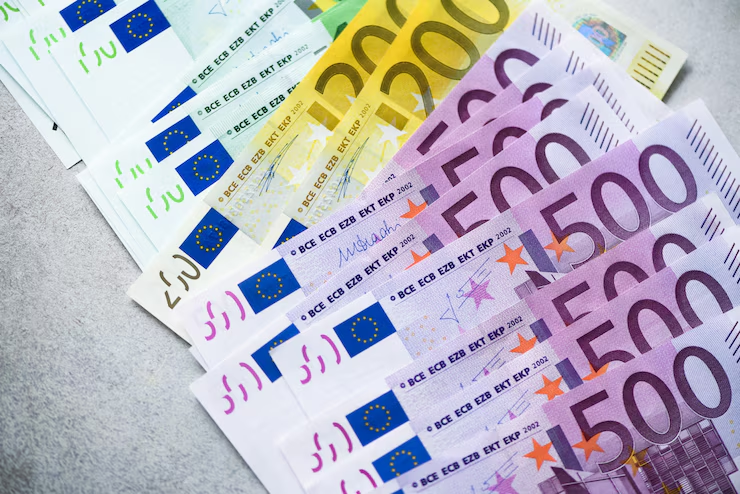EUR/USD Price Prediction: Major Resistance Levels and Market Trends In the Wake of Political Stability in Germany
EUR/USD is gaining momentum around 1.0470 in the Asian session on the back of renewed political stability in Germany following the election win of the conservative CDU/CSU alliance. Nevertheless, the pair is still bearish below the 100-period EMA, with major resistance at 1.0525-1.0530. A breakout above this level might trigger more gains towards 1.0630 and higher, while risks of a decline exist at 1.0400, with possible falls towards 1.0295 and 1.0210. Market sentiment is still cautious, with technical analysis indicating a mix of signals, making the 1.0500 level the key battleground for traders. KEY LOOKOUTS • EUR/USD has key resistance at 1.0525-1.0530, with a breakout potentially giving way to further gains towards 1.0630 and 1.0777. • The duo finds initial support at 1.0400, with further losses potentially taking it down to 1.0295 and 1.0210. • The 100-period EMA maintains the bearish picture, while the RSI level of 55.50 indicates possible upside action. • The CDU/CSU election win in Germany boosts EUR sentiment, but investor attention is still on major technical levels and economic indicators for further direction. EUR/USD is still at a crucial point, trading around 1.0470, as the market weighs important technical and political considerations. The pair is under significant resistance at 1.0525-1.0530, and a break higher could unlock the way to 1.0630 and 1.0777. Support on the downside is at 1.0400, with potential further losses towards 1.0295 and 1.0210 if selling gains momentum. The 100-period EMA maintains the bearish stance, while RSI at 55.50 indicates some upside potential. The CDU/CSU election win by Germany has also brought temporary stability to the Euro, but market sentiment is still wary, with the market closely observing economic data and global risk trends. EUR/USD remains close to 1.0470, with important resistance seen at 1.0525-1.0530 and support near 1.0400. The 100-period EMA remains bearish in its outlook, although the RSI indicates potential upside. Political stability in Germany favors the Euro but market sentiment is cautious. • EUR/USD is confronted by strong resistance near 1.0525-1.0530, with a breakout having the potential to move the pair towards 1.0630 and 1.0777. • The pair meets initial support at 1.0400, with further losses potentially pushing to 1.0295 and 1.0210. • The 100-period EMA maintains the bearish direction, limiting upside. • The 14-day RSI at 55.50 indicates probable upside momentum, subject to the ongoing bearish trend. • Germany’s CDU/CSU election success has brought temporary stability to the Euro, allowing for modest gains. • A breakdown below the lower band of 1.0295 could provoke further losses, with the upper band around 1.0530 serving as resistance. • Market participants are keeping a close eye on economic indicators and global risk factors for further guidance. EUR/USD currency pair is witnessing a change in market mood as political stability is back in Germany. The recent election win of the CDU/CSU coalition has allayed fears of extended political uncertainty, sending confidence in the Euro higher. Investors are now closely watching how this leadership transition will impact economic policies, trade relations, and fiscal strategies. With Germany being the largest economy in the Eurozone, its political direction plays a crucial role in shaping the broader European financial landscape. The market remains attentive to upcoming policy decisions that could influence investor confidence and economic growth. EUR/USD Daily Price Chart TradingView Prepared by ELLYANA Outside of politics, trends in global economics and macroeconomic events still dictate EUR/USD direction. Inflation rates, central bank actions, and geopolitical tensions are still major determinants of market sentiment. The U.S. Federal Reserve’s monetary policy stance and economic releases will still be important variables in dictating the pair’s direction in the future. Foremost, ongoing debates on global trade, energy prices, and economic recovery after the pandemic provide another dimension of uncertainty. As investors ponder these issues, market players take a wait-and-see attitude, anticipating better clarity on both regional and world economic situations. TECHNICAL ANALYSIS EUR/USD is still in a tentative area, as major indicators will determine its immediate direction. The pair is hovering below the 100-period Exponential Moving Average (EMA), supporting a bearish attitude. Yet, Relative Strength Index (RSI) at about 55.50 indicates moderate bullish pressure, and hopes for a move higher still linger. The Bollinger Bands signal possible volatility, the higher band serving as resistance at 1.0525-1.0530, and the lower band at 1.0295 acting as support. A clean break above resistance would initiate further advances, while below support would increase selling pressure. Traders are keeping close watch at these levels for confirmation on the direction of the next trend. FORECAST EUR/USD is able to cross above the crucial resistance area of 1.0525-1.0530, bullish pressure may intensify, driving the pair to even higher levels. A continued breakout above this range can draw new buying interest, likely propelling prices to 1.0630, a key level of resistance in December 2024. Still higher, a rally could continue to 1.0777, a level that was recently tested in August 2024. Improved market sentiment, better Eurozone economic statistics, or a more dovish bias from the U.S. Federal Reserve could still contribute to uptrend momentum in the pair. EUR/USD cannot stay above the 1.0400 psychological level support, and selling pressure may gain strength to cause more declines. Breaking below this psychological level may lay the ground for declines to the lower Bollinger Band at 1.0295, with an even deeper fall targeting 1.0210, the early February 2024 low. Bearishness can be triggered by more robust U.S. economic reports, a dovish Federal Reserve, or risk aversion across markets. In this situation, investors might rush to safe-haven assets, further stressing the Euro.




